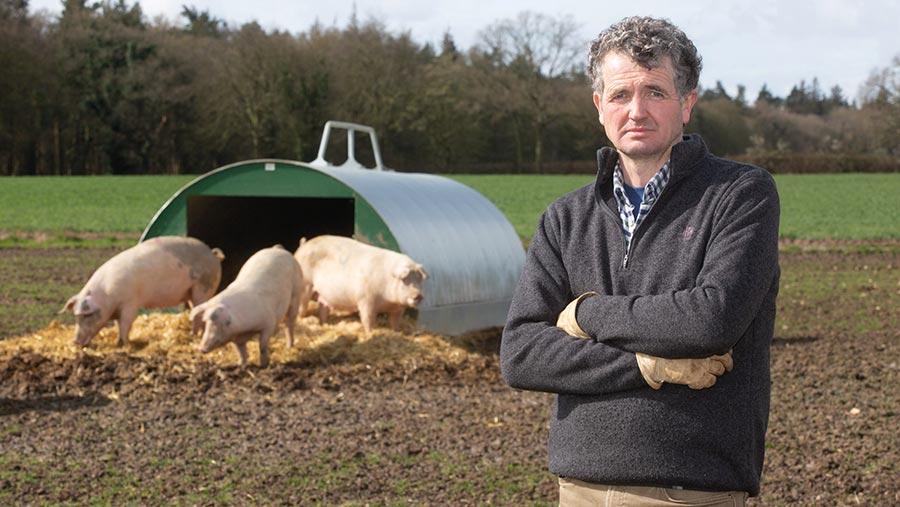Farmer Focus: Heat stress memories prompt early plans
 Rob McGregor © Tim Scrivener
Rob McGregor © Tim Scrivener At the beginning of last summer, I contributed to a Farmers Weekly article entitled “Seven ways to minimise heat stress in outdoor pigs”.
After one of the hottest summers on record it became clear my work was far from done on this subject.
During the hottest spells in July and August, the temperature inside our service tent (artificial insemination area) reached unpleasant levels for both the animals passing through and the people working in it.
See also: Expert tips on reducing heat stress in pigs
We also found our dependency on wallows as the primary chill-out area for our sows had become quite high-maintenance in terms of labour, machinery and that most precious of resources, water.
So, what better time to start planning our strategy to combat these problems than in mid-March, when the thermometer is reading a chilly -2C and snowflakes are floating down from a thick, cloud-filled Norfolk sky.
It’s probably the livestock farmer equivalent of a winter’s evening thumbing through a glossy holiday brochure – escapism, but with a serious side.
To get the temperature down inside the service tent, I’m planning a misting system over the stock pens, which should keep the pigs cooler by atomising water droplets in the air.
As long as the staff don’t mind getting a bit damp into the bargain, I think it will be a winner.
Reducing our dependency on wallows is going to be much more challenging. I’ve got a few ideas and one of them is looking at shade canopies again.
This is something we have created in the past, but we have never come up with a good enough design to make them successful.
Quite a few things have changed in recent years. Our dry sow huts, for one, have become higher and heavier, which I think will make them better anchorage points for large shades and hopefully not need additional structures added.
The range of materials available to create the canopies is far greater, and the wondrous ratchet strap has become a part of our everyday lives. Things can be done that a length of bailer twine could not have achieved.
By the time it’s sorted, it will be my turn to have a night on the sofa with that summer holiday brochure.

